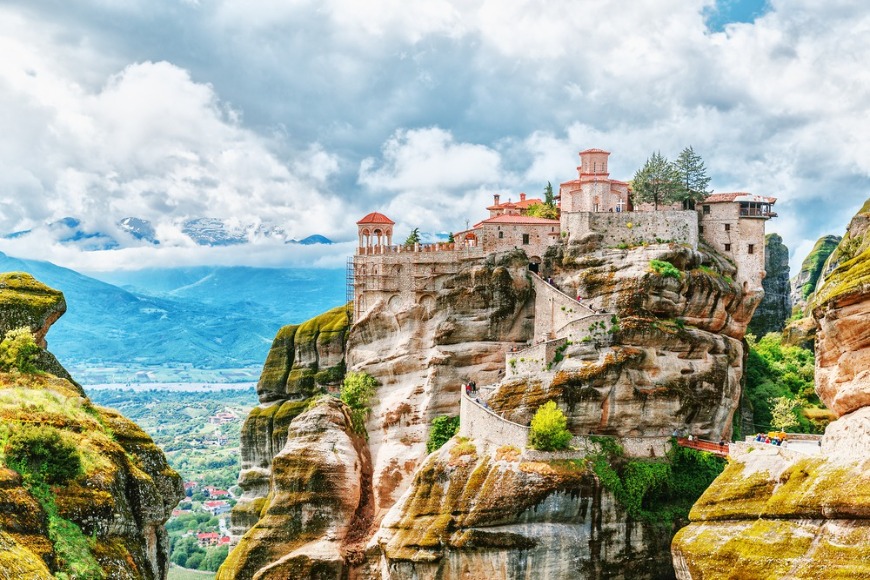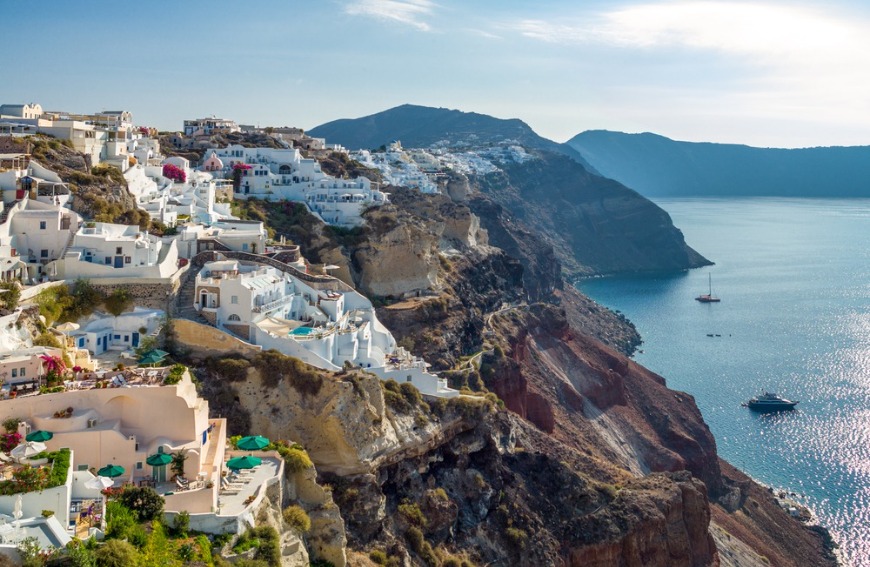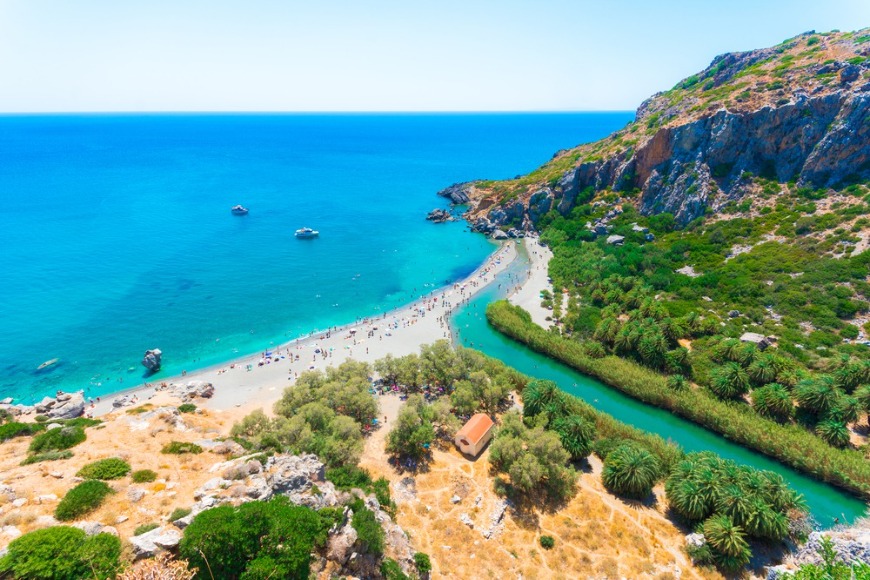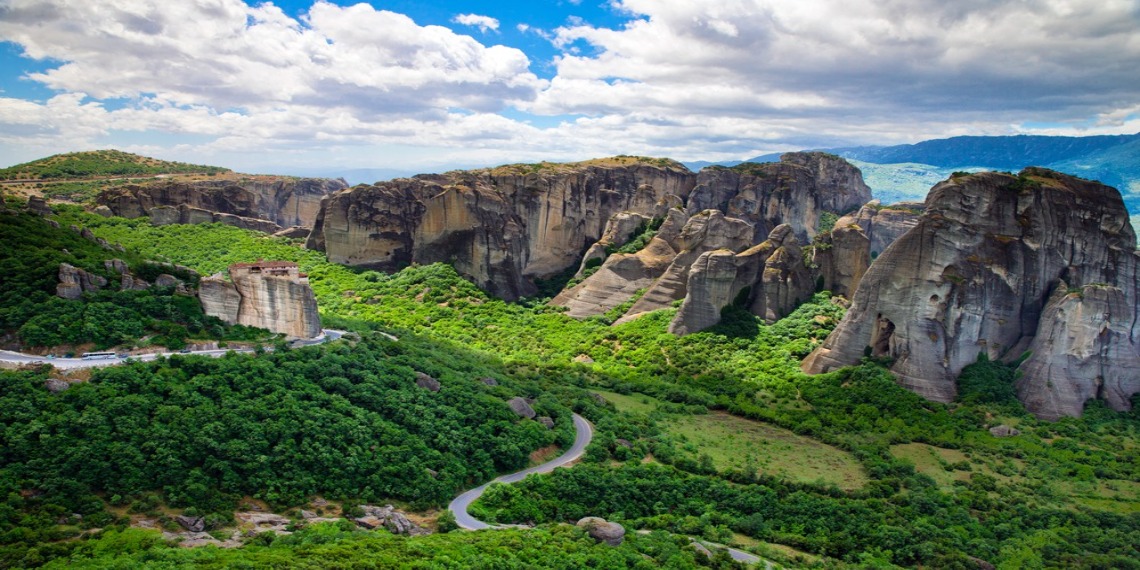
The area of Meteora in central Greece is one of the most beautiful and naturally striking areas in the country. Its views, atmosphere, and overall environment are sought after by travelers looking to enjoy serene surroundings and breath-taking natural settings. The most famous sight and the top attraction of the area are the monasteries of Meteora (meaning ‘suspended in the air’), an UNESCO World Heritage Site that offers a unique sense of tranquility. These monasteries are renowned for their religious importance but also for the view over the unique, awe-inspiring rock formations of the area. At their peak, the sandstone rock pillars of Meteora hosted 30 monasteries, however only 6 of them are active today. The sight is so remarkable that its mystical scenery has been captured in several films, such as James Bond and Game of Thrones.

Over the past 650.000 years, Santorini has been the epicenter of no less than twelve major volcanic eruptions. In 1950, the island’s brooding volcano sent a 3000-foot column of ash flying into the air and the island was abandoned in the aftermath. There is always a looming sense that what happened on Santorini over 3 millennia ago might happen again, but it is this endless cycle of destruction and rebirth that reveals the island’s truest character. Santorini’s caldera is the only inhabited caldera in the world, and it is undoubtedly an experience of a lifetime. The path along the rim of the famous volcanic caldera takes its explorers through traditional whitewashed settlements starting from Fira and ending all the way in Oia. Today, Santorini is most appreciated for its dramatic cliffs that overlook one of the largest caldera formations on earth - a sight that is to die for regardless of the time of year you may be visiting.

Crete is a true wonder on its own with an unspoiled nature unlike any other; however, there are a couple of gems that really stand out on the island. Balos Lagoon is among the most visited and photographed beaches in Crete due to its natural beauty and diverse ecosystem, while it is also protected by the NATURA 2000 European initiative. Its white sands, turquoise waters and wild beauty remind of an exotic haven, while it also serves as a shelter for the monk seals and caretta caretta turtles. As such, Balos Lagoon attracts quite a crowd, so it would be best to visit it during the early morning hours for a more tranquil experience. Another natural wonder of Crete, and perhaps the most iconic of Greece, is the atypical Preveli Beach. Located at the end of the imposing Kourtaliotiko Gorge and flowing right into the sea, it creates an awe-inspiring landscape with a tropical forest made of plam trees and oleanders, while its signature heart-shaped rock makes for a perfect background to a memorable picture.


